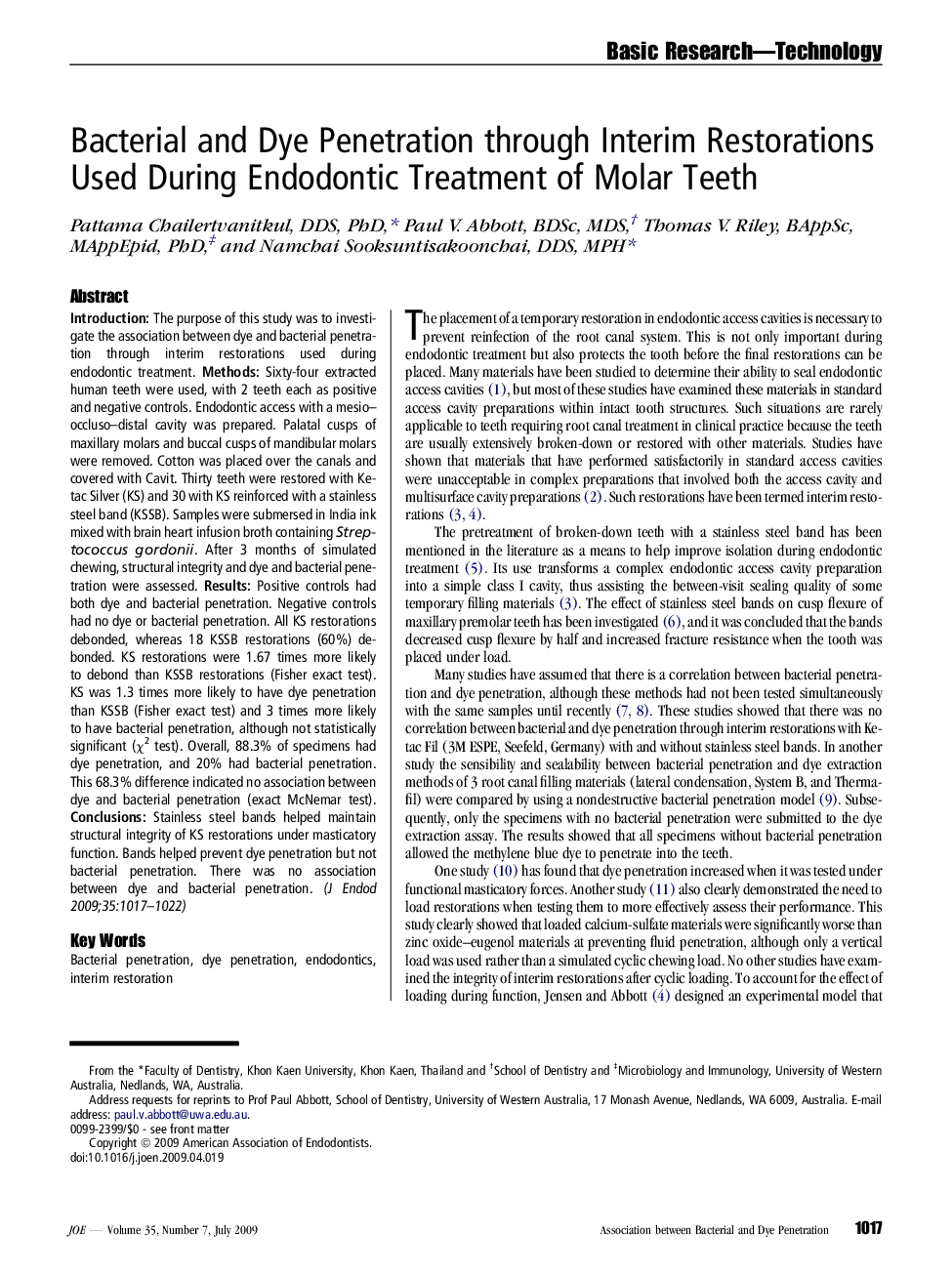| کد مقاله | کد نشریه | سال انتشار | مقاله انگلیسی | نسخه تمام متن |
|---|---|---|---|---|
| 3148518 | 1197404 | 2009 | 6 صفحه PDF | دانلود رایگان |

IntroductionThe purpose of this study was to investigate the association between dye and bacterial penetration through interim restorations used during endodontic treatment.MethodsSixty-four extracted human teeth were used, with 2 teeth each as positive and negative controls. Endodontic access with a mesio–occluso–distal cavity was prepared. Palatal cusps of maxillary molars and buccal cusps of mandibular molars were removed. Cotton was placed over the canals and covered with Cavit. Thirty teeth were restored with Ketac Silver (KS) and 30 with KS reinforced with a stainless steel band (KSSB). Samples were submersed in India ink mixed with brain heart infusion broth containing Streptococcus gordonii. After 3 months of simulated chewing, structural integrity and dye and bacterial penetration were assessed.ResultsPositive controls had both dye and bacterial penetration. Negative controls had no dye or bacterial penetration. All KS restorations debonded, whereas 18 KSSB restorations (60%) debonded. KS restorations were 1.67 times more likely to debond than KSSB restorations (Fisher exact test). KS was 1.3 times more likely to have dye penetration than KSSB (Fisher exact test) and 3 times more likely to have bacterial penetration, although not statistically significant (χ2 test). Overall, 88.3% of specimens had dye penetration, and 20% had bacterial penetration. This 68.3% difference indicated no association between dye and bacterial penetration (exact McNemar test).ConclusionsStainless steel bands helped maintain structural integrity of KS restorations under masticatory function. Bands helped prevent dye penetration but not bacterial penetration. There was no association between dye and bacterial penetration.
Journal: Journal of Endodontics - Volume 35, Issue 7, July 2009, Pages 1017–1022